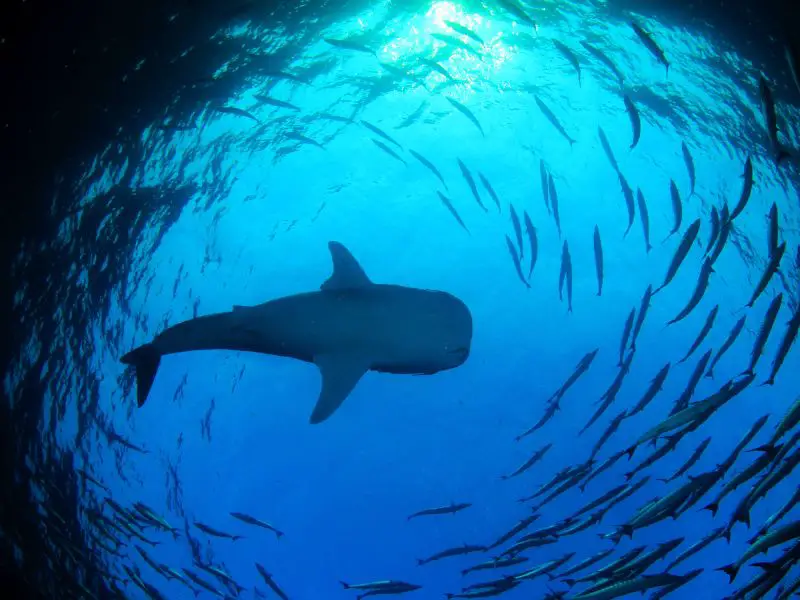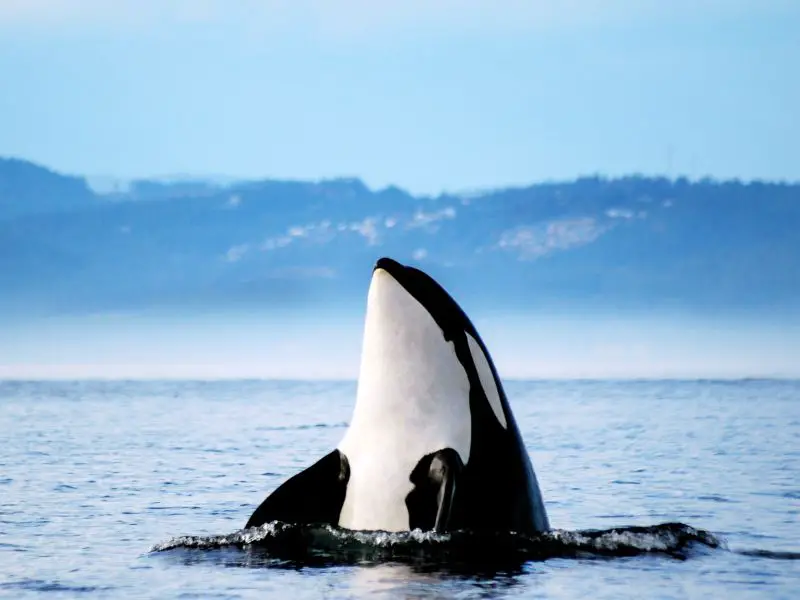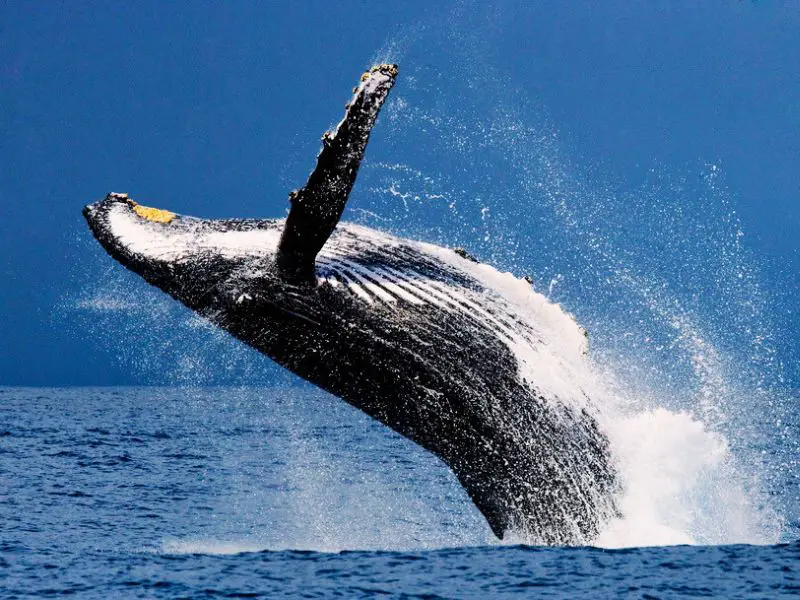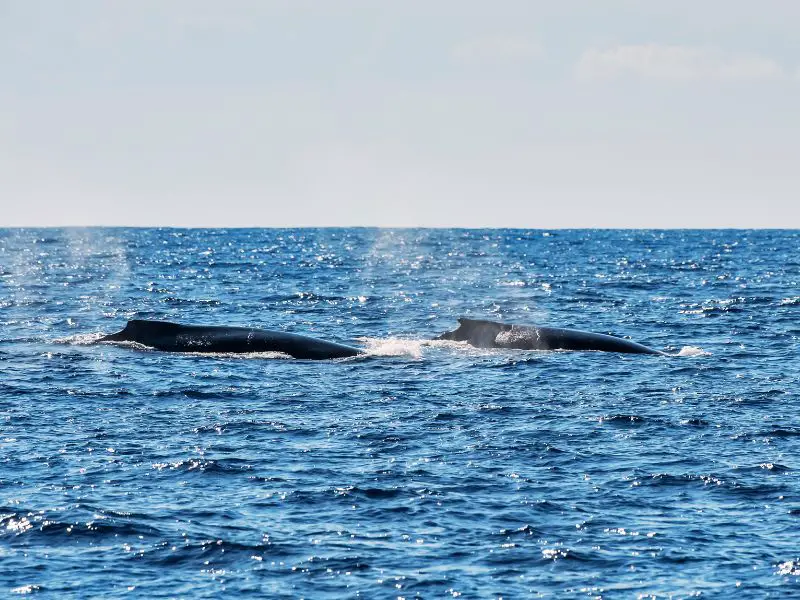Are whales endangered? This question is more important than ever. Whales are amazing creatures that play a big role in our oceans’ health. But they face a lot of threats. This article will help us understand what’s going on with whales today, why they might be in danger, and what we can do to help them. It’s a journey to the heart of our oceans, and we’re glad you’re joining us. Let’s dive in and learn more about these incredible animals.
Current Status of Whale Populations
Whales are endangered species that face numerous threats that put their populations at risk. This section will discuss the current status of whale populations, including global population numbers and the most vulnerable populations.
Global Population Numbers
The global population of whales is challenging to estimate accurately due to the vastness of the ocean and the migratory nature of many whale species. However, according to the International Whaling Commission (IWC), some whale populations have rebounded since the end of commercial whaling in the 1980s.
Despite this, many whale populations remain at risk. The IWC lists several whale species as endangered or vulnerable, including the North Atlantic right, blue, and humpback whales. Various factors threaten these populations, including habitat loss, pollution, and climate change.

Most Vulnerable Populations
Specific whale populations face higher vulnerability compared to others. Take the North Atlantic right whale as an example, which stands as one of the most endangered whale species, with a sparse population of less than 350 individuals. The presence of fishing gear, ship strikes, and noise pollution pose severe threats to this population, increasing the risk of entanglement.
Similarly, the blue whale population is listed as endangered by the IWC, with an estimated population of only around 10,000 individuals worldwide. Pollution, climate change, and habitat loss threaten this population.
Other vulnerable whale populations include the humpback whale, the gray whale, and the bowhead whale. Various factors threaten these populations, including climate change, ocean pollution, and habitat loss.
History of Whaling
Humans have engaged in whaling for thousands of years, making it a part of our history. However, in the 17th century, we started commercial whaling, which substantially impacted whale populations. Numerous whale species face endangerment, and authorities enforce strict regulations on whaling to prevent their extinction.
Commercial Whaling
During the 19th and early 20th centuries, the whaling industry boomed as it hunted whales for their blubber, which was utilized in producing lamps, soap, and margarine oil. Additionally, whale meat served as a favored food source in numerous countries.
Countries such as Norway, Japan, and Iceland actively participated in commercial whaling, contributing significantly to its prevalence. Nevertheless, due to excessive hunting, numerous whale species teetered on the edge of extinction. In response, the International Whaling Commission (IWC) was established in 1946 to regulate whaling activities and ensure the preservation of whale populations.

International Whaling Commission
The IWC is an intergovernmental organization established to manage whaling and promote the conservation of whale populations. In 1986, the IWC implemented a moratorium on commercial whaling, which banned the hunting of all whale species. This moratorium has been successful in preventing the extinction of many whale species.
However, Japan has continued hunting whales for scientific research, which has been a controversial issue. Norway and Iceland have also resumed commercial whaling, despite the ban.
Whaling Industry Today
Today, the commercial whaling industry is much smaller than in the past. Most countries have stopped hunting whales, and whale watching has become a popular tourist attraction in coastal communities. However, some countries continue hunting whales for meat and other products.
Many whale species are still endangered despite the regulations and bans on whaling. Climate change, pollution, and entanglement in fishing gear pose additional threats to whales. We must continue to protect whale populations to ensure their survival.
Threats to Whale Populations
Several threats in their natural habitats endanger whales, including entanglement, ship strikes and collisions, underwater noise, and pollution.
Entanglement
One of the biggest threats to whale populations is entanglement in fishing gear. Whales can become entangled in fishing nets, lines, and traps, which can cause serious injuries or even death. This threat is especially prevalent in areas where fishing is a primary industry, such as the North Atlantic and the Pacific.
Ship Strikes and Collisions
Ship strikes and collisions pose another major threat to whale populations. As the shipping industry expands, the risk of ships hitting whales increases. Ships colliding with whales can cause severe injuries or fatalities. This threat is significant in regions with high shipping traffic, including the Arctic and Antarctic.
Underwater Noise
Whale populations face yet another peril in the form of underwater noise. The clamor caused by oil exploration, ships, and various other sources of noise pollution can disrupt whale communication and navigation, hampering their ability to locate nourishment and companions. This disturbance can cause diminished reproductive success and heightened rates of mortality.
Pollution
Pollution is also a significant threat to whale populations. Chemicals and other pollutants can accumulate in whale tissues, causing health problems and death. Oil spills and different types of pollution can also damage whale habitats and reduce the availability of food sources.
Conservation Efforts
Conservation efforts have been put in place to protect whales as endangered species. These conservation efforts include mitigation, protected status, management plans, and recovery.
Mitigation
Mitigation is reducing or preventing negative impacts on whales and their habitats. This includes reducing noise pollution from ships and sonar, implementing peed limits for vessels, and reducing the risk of entanglement in fishing gear.
Protected Status
The Endangered Species Act and the Marine Mammal Protection Act protect whales and their habitats legally, prohibiting certain activities that may harm them.
Recovery
The National Oceanic and Atmospheric Administration (NOAA) regularly implements recovery efforts to increase whale populations and restore their habitats. These efforts include conducting stock assessments, collecting data from surveys, tagging programs, and other research efforts to determine the population status of various whale species and inform management decisions.
Overall, conservation efforts are essential to ensuring the survival of whales and their habitats. By implementing mitigation measures, providing protected status, developing management plans, and investing in recovery efforts, we can help to ensure that these magnificent creatures continue to thrive in our oceans.
Behavior and Biology of Whales
As you research whether or not whales are endangered, it is essential to understand the behavior and biology of these majestic creatures. Here are some key topics to consider:
Feeding and Diet
Whales possess an impressive stature, requiring substantial sustenance to thrive. Baleen whales, such as humpback and blue whales, skillfully feed on krill and small fish by filtering them through their baleen plates. On the other hand, toothed whales like orcas and sperm whales employ their hunting prowess to pursue larger prey such as squid and fish.
Migration and Breeding
Whales are known for their impressive migrations spanning thousands of miles. They travel to breeding grounds to mate and give birth to calves, which are born tail-first in the water. Some species, like the gray whale, follow a yearly migration pattern.
Baleen Plates and Blubber
Baleen whales have unique baleen plates in their mouths that they use to filter food from the water. These plates are made of keratin, the same material that makes up human hair and nails. Whales also have a thick layer of blubber under their skin that helps them stay warm in cold waters.
Appearance and Photo-Identification
Whales have distinctive appearances that make them easy to identify. For example, humpback whales have long pectoral fins and knobby heads, while sperm whales have square-shaped heads and unique scars on their skin. Researchers use photo identification to track individual whales over time.
Overall, understanding the behavior and biology of whales is crucial to understanding why they are endangered. By studying these creatures, we can work to protect them and ensure that they continue to thrive in our oceans.
Specific Whale Species
Regarding “Are whales endangered?”, looking closely at specific species is essential. Here are some of the most well-known whale species and the current status of their populations.
1. North Atlantic Right Whale
The North Atlantic right whale is one of the most endangered whale species, with fewer than 350 individuals remaining. The primary threats to this species include entanglement in fishing gear and vessel strikes. Efforts are being made to reduce these threats, such as implementing fishing gear modifications and speed restrictions for vessels in certain areas.

2. Blue Whale
The blue whale, an endangered species, holds the title of being the largest animal on Earth. Although the population of blue whales has seen some growth since the cessation of commercial whaling, they continue to confront complex challenges like getting tangled in fishing gear and colliding with ships. Climate change poses a significant concern as it disrupts krill availability, which serves as the primary food source for these magnificent creatures.

3. Humpback Whale
Once heavily hunted for their fat and meat, humpback whales have since recovered. However, entanglement in fishing gear, vessel strikes, and noise pollution still pose threats, making them vulnerable. People are trying to reduce these threats by implementing shipping lane changes and reducing noise levels in their habitats.

4. Sei Whale
The sei whale, a species hunted extensively for its fat and meat, has experienced a substantial population decline. Despite some increase in numbers, it remains classified as endangered. The sei whale faces threats such as entanglement in fishing gear and collisions with vessels.

Bottomline
So are whales endangered? That’s a sad yes for many species. These gentle giants of the sea are facing numerous threats that jeopardize their existence. But there is also hope. Across the globe, conservationists are working tirelessly to ensure a better future for these majestic creatures.
It is up to all of us to support these efforts and make choices that are friendly to whales and their ocean home. Because a world where whales are no longer endangered is a healthier, more balanced world for us all.
Riding the Wave of Change! Dive into a world where ocean superheroes unite. Discover the organizations leading the charge to stop ocean pollution, and join the global tide of action for cleaner seas!


Hey there You have done a fantastic job I will certainly digg it and personally recommend to my friends Im confident theyll be benefited from this site